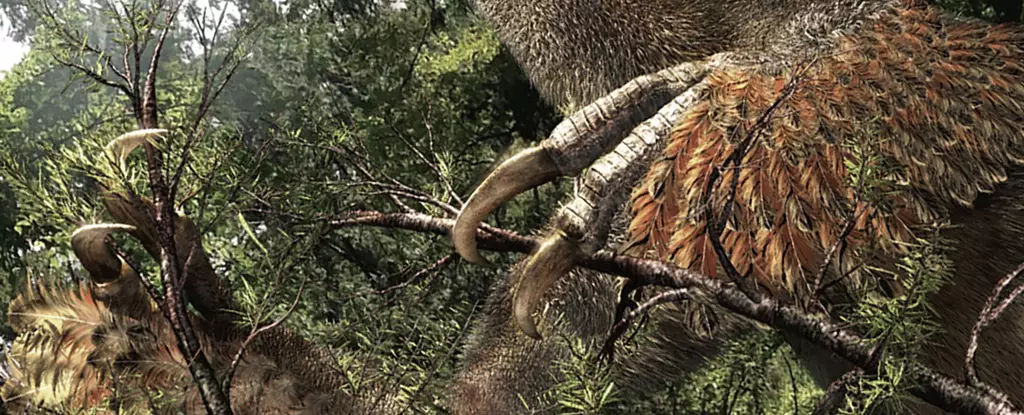The realm of paleontology is forever vibrant with new discoveries, but few strike awe quite like the unearthing of Duonychus tsogtbaatari. Found within the fossil-rich Bayanshiree Formation of southeastern Mongolia, this newly identified dinosaur is not simply another addition to the vast catalog of ancient reptiles; it’s a peculiar specimen that could reshape our understanding of therizinosaurs. Unearthed in 2012 by a dedicated team from the Mongolian Academy of Sciences, the fossil is estimated to date back an astonishing 90 to 95 million years. In a landscape known for its rich diversity—ranging from giant footprints to massive pterosaurs—the presence of Duonychus sends ripples through the scientific community, challenging preconceived notions about its evolutionary adaptations.
A Unique Anatomy: Two Fingers, Wicked Talons
What sets Duonychus apart isn’t just its age, but its extraordinary anatomy. In a world where most theropods flaunt three fingers, this dinosaur’s two-fingered design is both a mystery and marvel. Each finger culminates in a menacing, claw-like talon that measures nearly a foot long. This bizarre limb structure prompts necessary questions about its ecological role. Why would a theropod discard a digit? According to paleontologists, the answer likely lies in its dietary habits—Duonychus appears to have been a plant eater, perhaps employing its formidable claws to snatch leaves from trees in a sloth-like manner. The potential grasping capabilities offered by such a talon configuration could suggest that it was not merely a weapon but rather an instrument of sustenance.
It is intriguing to think about how evolution might favor such a skeletal anomaly. As noted by researcher Kobayashi, discovering a therizinosaur with only two functional fingers is a rare occurrence within the sub-group that typically sees three. This anatomical deviation opens new avenues of inquiry, opening discussions around how varied adaptations can arise in response to food sources available in prehistoric ecosystems.
Cultural Significance: A Nod to Mongolian Heritage
The nomenclature of Duonychus tsogtbaatari pays homage to the well-respected Mongolian paleontologist Khishigjav Tsogtbaatar, bringing pride to a nation steeped in paleontological history. Mongolia is often celebrated as a treasure trove for fossils, historically yielding some of the most significant dinosaur finds. This relationship between the discovery and Mongolian studies underscores the importance of regional acknowledgment in the global landscape of paleontology. The naming also reflects an appreciation for the scientists who contribute to our understanding of Earth’s prehistoric past. In a world increasingly globalized, the challenge remains to recognize and uplift the countries actively contributing to scientific discourse.
Ecological Implications: The Role of Claws Beyond Defense
Examining the various functions of Duonychus’s claws extends far beyond immediate uses such as feeding. The research suggests a multitude of behaviors ranging from defense and territorial marking to potential courtship displays. Unlike what was previously understood, the claws may also serve social or communicative roles within their species, akin to how contemporary animals use physical characteristics to express vitality or status. Such versatility could be a significant evolutionary advantage in an ancient, competitive ecosystem.
The fact that these claws were discovered alongside a well-preserved keratin sheath adds an invaluable layer to the understanding of dinosaur morphology. Typically, keratin does not fossilize and decomposes long before the bones do, making this find particularly noteworthy. Having this sheath intact offers a comprehensive analysis that can influence everything from how we understand feeding methods to physical interactions in the theropod order.
In many ways, the discovery of Duonychus tsogtbaatari serves as a reminder that there is still a vast array of knowledge waiting to be uncovered, waiting for the right fossil, the right team of researchers, or perhaps just the right circumstances to bring it out of obscurity. Every excavation has the potential to challenge established understanding and invoke a sense of wonder akin to what initial explorers experienced when they first stumbled upon dinosaur fossils in the 19th century. As the field of paleontology continues to evolve, so too does our appreciation for the complexity and nuance surrounding these ancient species.

